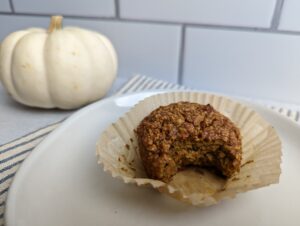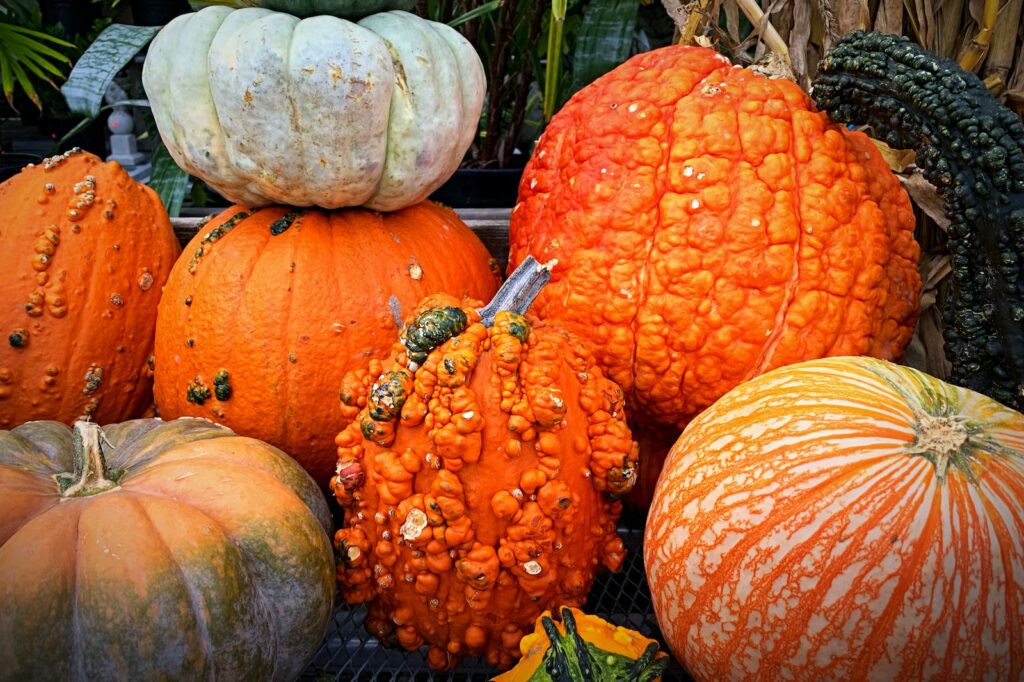Revised and updated. Originally posted October 30, 2012.
The great pumpkin makes a great carved jack-o-lantern and is pretty to look at, but did you know that pumpkins are actually fresh vegetables loaded with real food nutrition including vitamins, minerals, and phytonutrients? Most people find pumpkins pretty on their porch step but are a bit intimidated to start cutting. . .
So, why should you quit carving jack-o-lantern faces (after Halloween of course) and start creating nutritious pumpkin culinary creations?
- Pumpkins are extremely low in calories (only 49 calories per cup) but are filled with vitamins, minerals, phytonutrients, and fiber- as an Integrative Registered Dietitian Nutritionist, I refer to this as nutrient-dense.
- One cup of pumpkin packs in 564 mg of potassium which is more potassium than a banana. Potassium is a key component of the sodium-potassium pump in all of your cells which helps to maintain water balance inside and outside of cells. Potassium also helps protect against high blood pressure and a diet high in potassium can help reduce blood pressure if you have hypertension as it balances out sodium.
- Sufficient potassium is also essential for athletes and exercisers who sweat a lot. Potassium is an important electrolyte along with calcium and magnesium. Low potassium can lead to muscle cramping and because pumpkin is a great source, its a great veggie for athletes.
- One cup of pumpkin contains over 2,400 mcg of carotenoids (a fancy name for pigment that makes pumpkins orange) which are great for your eyes. Like carrots, the bright orange color in pumpkins is essential for eye health and great vision long-term.
- Don’t forget the seeds! Pumpkin seeds are loaded with phytosterols (about 260 mg per 100 grams) which have an incredibly potent cholesterol lowering action. Carve or cut your pumpkin, save the seeds, soak them in saltwater, dry thoroughly, toss with some sea salt or spices and roast them.
I’m sure you’re familiar with pumpkin pie, but have you experienced other ways to enjoy the flavor of this infamous Halloween and American Thanksgiving vegetable? Try preparing it and cooking it like any other winter squash.
You can use pumpkin in so many different ways. Here are some pumpkin recipes to get you started that have stood the test of time:
- Roasted Butternut Squash – you cook pumpkin in the exact same way
- Butternut Squash Apple Soup – try using pumpkin!
- Banana Oatmeal Pumpkin Muffins
- Pumpkin Spice Muffins – almond flour base
- Pumpkindoodle Cookies
- Not Your Grandmother’s Pumpkin Pie – a non-traditional gluten free/dairy free pie that is a holiday staple at our house
Here are a few other ways to use pumpkin from my friends and colleagues:
- Sweet Potato Gnocchi – substitute pumpkin, it works great!
- Pumpkin Spice Latte – made with real pumpkin, I like to make this with steeped chai tea or black tea instead of the coffee and sometimes add a scoop of vegan protein powder to make a Chai Pumpkin Spice Latte Breakfast Elixir. . . it’s all good
- Crustless Pumpkin Pie – similar to my Pumpkin Pie recipe above without the crust- so good
- How to Roast Pumpkin Seeds – note the key to crunchy pumpkin seeds is a saltwater soak!
So, break out your biggest chef’s knife or cleaver and start cutting, scooping, and baking.
Note that if you want to get the benefits of pumpkin without the steps to get from pumpkin to pumpkin puree, grab a couple BPA-free cans or cartons of pumpkin puree at the store the next time you’re shopping. Canned pumpkin should have only 1 ingredient: pumpkin or organic pumpkin. It should not have a long list of ingredients, if it does, you may be looking at pumpkin pie mix (it’s loaded with sugar). Go for plain solid pack pumpkin.
Share your favorite ways to prepare pumpkin below or tag Erin on social media @realfooderin.



there are a lot of very healthy benefits to eating pumpkin. Pumpkin can help your skin to stay younger looking longer.